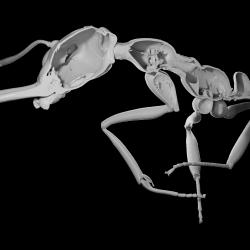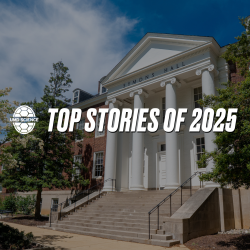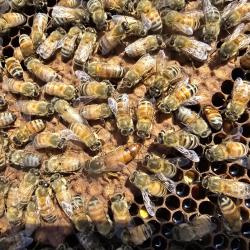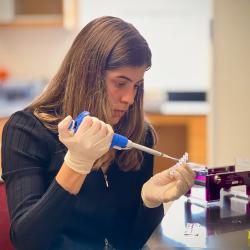Urban Trees Rooted in Redlining and Environmental Injustice
Neighborhood street trees in Baltimore tell a tale of both historical racial discrimination and modern reparation, according to new UMD-led study.
A University of Maryland-led team discovered that trees in Baltimore reflect the city’s history of institutionalized racism, but also more recent efforts to counter environmental injustice.
Funded by the National Science Foundation and the U.S. Department of Agriculture, this research is the latest contribution to the 25-year Baltimore Ecosystem study. The team’s findings were published on October 5, 2022 in the journal Ecology.

In the study, researchers analyzed street trees in 36 Baltimore neighborhoods that were once classified by the Home Owners’ Loan Corporation (HOLC), a New Deal program intended to expand homeownership. Infamously, HOLC classified and color-coded neighborhoods by perceived mortgage risk—green was designated as “best,” while red was deemed “hazardous.”
Often, the criteria used to classify neighborhoods was explicitly discriminatory; neighborhoods with high populations of racial and religious minorities as well as immigrants were more likely to be “redlined.” As a result, residents in those areas often experienced lower property values, resource investment by cities and wealth accumulation decades into the future.
“We found that previously redlined neighborhoods had consistently lower street tree diversity and were much less likely to have larger, older trees on a site,” said Karin Burghardt, lead author of the study and an assistant professor of entomology at UMD. “This is important because the differences in tree size and diversity affect the natural ecological services provided by trees—ultimately impacting the quality of life for residents living nearby.”
The team discovered that green, low-risk neighborhoods were nine times more likely to have larger and older trees present than red, high-risk neighborhoods. Additionally, trees found in green neighborhoods were significantly more diverse containing more types of trees than in red neighborhoods. The researchers found that present-day street trees in Baltimore contained signatures of the 1937 HOLC loan risk classifications that had been based on racially discriminatory criteria.
“Older, larger trees have more canopy cover than smaller trees, which can impact variables like local heat islands, air quality, soil health and even stormwater management. Similarly, higher tree diversity allows for more resiliency against invasive pest or disease outbreaks,” Burghardt explained. “These differences in tree communities and size may help explain why red-lined spaces have become associated with poorer health outcomes and shorter life expectancies for people living in them.”
On the other hand, the researchers also noted a greater dominance of smaller, younger trees in formerly redlined neighborhoods—possible evidence of Baltimore’s recent efforts to address the disparity between neighborhoods.
According to Burghardt, Baltimore’s new sustainability goals and efforts by city foresters and local tree-planting organizations have likely created an ongoing push to increase tree canopy cover and biodiversity in previously under-invested areas in the city. With this movement and others like it, she believes that more people from all communities in Baltimore will be able to enjoy the natural benefits that trees provide and do their part in the fight against climate change.
But the researchers did inject a note of caution; they discovered that these new communities of young trees planted in previously redlined neighborhoods were made up of fewer species than those in green areas and are heavily planted with a single species, red maple, across all previously redlined neighborhoods. While red maple is an adaptable, native tree species, the lessons of the massive loss of ash and elm trees from cities due to imported diseases and pests suggest that relying on one or a few species could decrease the resilience of these new urban forests in the future.
Ultimately, the research team hopes that its study will help Baltimore residents and policymakers gauge current efforts at promoting environmental justice and biodiversity. Data from HOLC color-coded maps and records of existing trees suggest that more can be done to overcome Baltimore’s socioecological challenges, including additional maintenance of young trees after planting and more focus on social investment in redlined communities.
“We can still see the negative effects of redlining in today’s street tree communities,” Burghardt said. “But our research indicates that the people of Baltimore are making real strides toward correcting environmental injustice.”
###
In addition to Burghardt, co-authors of the study include researchers from Johns Hopkins University, the USDA Forest Service Baltimore Field Station and the University of Maryland, Baltimore County.
This research was supported by the National Science Foundation (Award Nos. DEB 1855277, CNH-2: 1924288) and USDA-NIFA (Award No. 2021-67013-33619).
The paper, “Current Street Tree Communities Reflect Race-based Housing Policy and Modern Attempts to Remedy Environmental Injustice,” Karin T. Burghardt, Meghan L. Avolio, Dexter H. Locke, J. Morgan Grove, Nancy F. Sonti, and Christopher M. Swan, was published on October 5, 2022 in Ecology.







